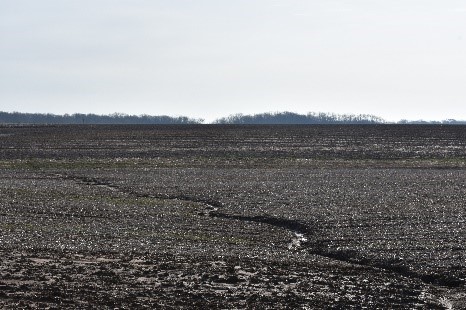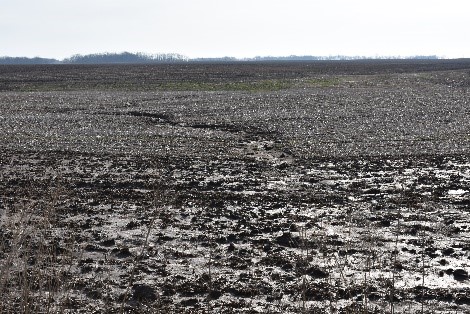ILSOYADVISOR POST
How to improve continuous soybean rotations
This past season farmers planted 10.9 million acres of soybeans in llinois, up 3% from the previous year, according to the latest USDA NASS survey. A portion of these acres were the result of soybeans following soybeans in the crop rotation. What are some of the considerations we should have when planning a monoculture crop rotation such as beans after beans, and what are some practices that we can adopt to minimize the environmental impacts?
Fragile Residue
We know that soybean residue is very fragile and even with a minimum amount of disturbance of the soil from tillage it breaks down rapidly, leaving the soil exposed to erosion from both wind and water. Two of the principles to impoving soil health are minimizing soil disturbance and maintaining cover or residue on the soil surface.
Soybean residue doesn’t provide the same amount of protection to the soil as corn and other crops’ residue, mainly due to the amount of residue left after harvest. For example, the average corn crop will produce about 5 tons of crop residue per acre—compare that to an average soybean crop that will only produce around 2 tons of crop residue.
Fall tillage on soybean stubble leaves the soil exposed for a long period of time before there will be another crop growing to hold the soil in place and protect from erosion. If the cropland has medium or highly erodable soils or any slope that allows water to gain momentum on the soil surface, fall tillage should be eliminated and residue cover should be maintained. These soils are the most susceptible to soil loss.
The soil that is being lost through erosion also contains valuable crop nutrients such as phosphate that can have negative effects on water quality when they leave the field and enter streams and bodies of water. No-till and strip-till should be utilized as a best practice to minimize the erosion effects on a field with low surface residue.
Cover Crops as an Environmental Risk Reduction Tool
Two principles of soil health can be addressed by adding cover crops to the soybean/soybean rotation. Protecting the soil and maximizing biodiversity in a monoculture cropping system can both be improved by planting cover crops after harvest.

The covers add additional plant species diversity both above and below the soil surface. Cover crops will also keep living roots in the soil at a time when nothing else would be growing. These roots can help keep the soil in place, improve soil biology and reduce erosion.
Cover crops help reduce the amount of water runoff from the field by allowing for greater water infiltration into the soil profile. The less water leaving a field the less soil that is lost as well. Since a continuous soybean rotation provides little protection to the soil for almost half a year, I can’t think of a more essential practice than cover crops.
What You Can Do
Cover crops and no-till provide a way to improve water quality and reduce soil loss in a system that is otherwise fragile and susceptible to environmental losses and degradation. The addition of the cover crop in the fall protects the soil from erosion and runoff losses.






Comments
Add new comment